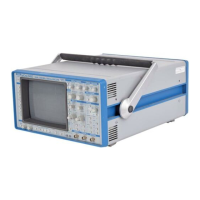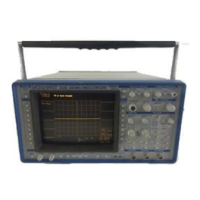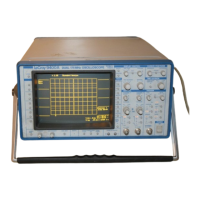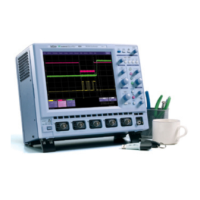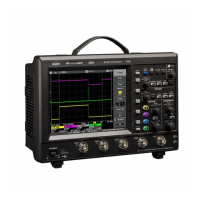C–9
Using FFT
Using FFT Functions
Select “FFT” from the “Math Type” menu (see Chapter 10
for a full description of math and waveform processing
menus). Spectra displayed with a linear frequency axis
running from zero to the Nyquist frequency are shown at
the right-hand edge of the trace. The frequency scale
factors (Hz/div) are in a 1–2–5 sequence.
The processing equation is displayed at the bottom of the
screen, together with the three key parameters that characterize
an FFT spectrum. These are:
1. Transform Size N (number of input points)
2. Nyquist frequency (= ½ sample rate), and
3. Frequency Increment, ∆f, between two successive points of
the spectrum.
These parameters are related as:
Nyquist frequency = ∆f ∗ N/2.
Where: ∆f = 1/T, and where T is the duration of the input
waveform record (10 ∗ time/div). The number of output points is
equal to N/2.
Note on Maximum Points: FFT spectra are computed
over the entire source time-domain waveform. This limits
the number of points used for FFT processing. If the
input waveform contains more points than the selected
maximum (in “for Math use max points”, they are
decimated before FFT processing. But if it has fewer, all
points are used.
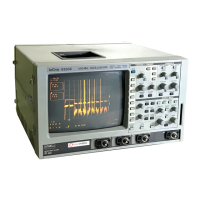
